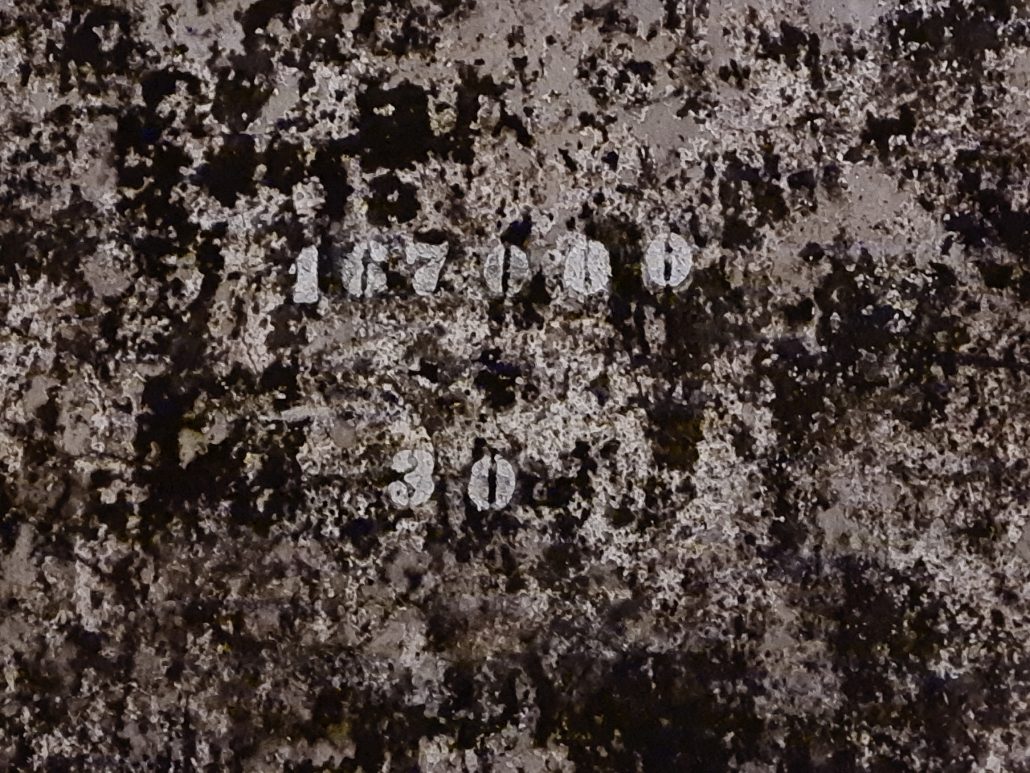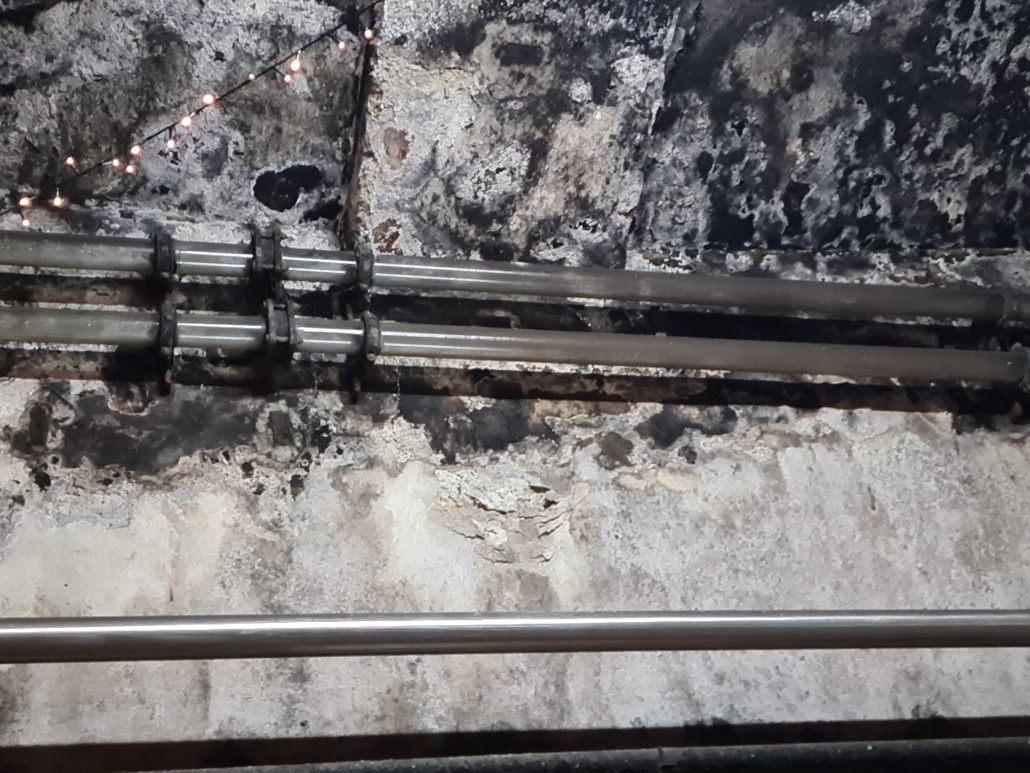Standing at Kodžak, what residents call the National Liberation Monument in Maribor, I looked around. The castle was on my left and another building clothed in scaffolding stood on my right. I didn’t know it at the time, but I was looking at Kriehuber Palace. Built by nobleman Alozj Kriehuber in 1847, it looks unremarkable in its remarkableness. If you’re familiar with the architecture of this part of the world, it’s one of a litany of similarly impressive buildings that are often lost in their togetherness.

It took nearly ten years to build – the building and the cellar he excavated underneath.
Post WWII, the wine cellar, Vinag 1847, merged with an even older beer cellar next door, then owned by Union, one of the two biggest breweries in the country today. Together they’ve become the largest tunnel wine cellar in Central Europe.
When walking above ground, you’d never think you were walking over some 15,000 square metres of cellars that run in tunnels for more than 2 km. [A further 5,000 square metres was sold off for a car park.]

Ably guided by the lovely Pia, we set out, with a young Korean/German couple, to explore the vastness and attempt in some small way to get our head around the numbers.
We descended the 23 steps into the cellar. There’s a significance to this – as the legend goes, a winemaker makes 23 visits to a vineyard before the grapes are turned into wine. Who knew?
In its day, when Vinag 1847 stored 5.5 million litres of wine. (For those of you across the pond, that’s almost 1.5 million gallons.) In anyone’s language, it’s a lot of wine. The numbers speak for themselves.


The wooden barrels vary in size. The large ones are oval-shaped, taking up less space and making them easier to clean. They’re so big, they were built in place, assembled by numbers. The biggest use 10 cubic metres of wood and are 4 m long.

The concrete ‘barrels’ have ceramic inlays and can hold up to 30,000 litres.


We were 6-10 m underground in places with temperatures hovering about 14-15 degrees C. Black mould covers the walls – the good mould – the mould that wine likes. This was good news for us as we have the same black mould growing in our cellar. I can sleep easy now knowing it’s the wine-loving not human-hating stuff.
The wine archive is straight from a horror movie. The mould hanging from the ceiling would make a great backdrop for some gruesomeness. Before the archive’s contents were sold off at a loss when the cellar went bankrupt in 2016, it had far more than the current 75,000/85,000 bottles in residence, the oldest of which dates to 1946/7.* With a capacity for 400,000 bottles in all, that’s a lot of money on the shelf. And given that the corks have to be changed every 7-8 years, it’s also a lot of work for someone.

We meandered through the tunnels, checking in on the event space where they were setting up for a concert later that evening. The cogs were turning. We could do the same (on a smaller scale) with our cellar. [Note to self to look out for folding chairs.]

We saw the chapel too, a common sight in the bigger cellars of old and Vinag was no exception. [My kapolna is taking shape, but it’ll be above ground.]
I’d have liked a slower walk through the tunnels there was that much to see. Coins stuck into walls. Various awards and medals. Old equipment. I was fascinated by the lines of glass pipes that are/were used to move wine throughout the cellars. Cleaned by a ball of lead covered in black rubber, they reminded me of cleaning the Trans Alaska Pipeline with a pig.

Then it was to the tasting room.
Perhaps because of the event that evening, we could pretty much pick what we wanted.
We both started with a Kriehuber Brut, a penina. Penina is the Slovenian equivalent of Spain’s cava, Italy’s prosecco, and Hungary’s pezsgő. We then moved on to a macerated Laški Rizling Noble, a very nice deep-coloured dry white that looks like it should be a dessert wine. We finished with a Renski Rizling (me) and a Chardonnay (himself). Interestingly, the Chardonnay was bottled in a green bottle because during and in the aftermath of COVID-19, white glass bottles were in short supply.
It was all very convivial. Pia, our guide, did a great job answering questions. The tour takes about 90 minutes and the tasting takes as long as it takes. All for €20-25/person. Book in advance for English. Recommended if you’ve even the remotest interest in wine and winemaking. A lovely way to pass a few hours.


* Different sources quote different numbers – both given.
Share this:
- Click to share on X (Opens in new window) X
- Click to share on Facebook (Opens in new window) Facebook
- Click to share on Pinterest (Opens in new window) Pinterest
- Click to share on LinkedIn (Opens in new window) LinkedIn
- Click to share on Reddit (Opens in new window) Reddit
- Click to share on WhatsApp (Opens in new window) WhatsApp
- Click to share on Pocket (Opens in new window) Pocket
- Click to share on Telegram (Opens in new window) Telegram
- Click to email a link to a friend (Opens in new window) Email







5 responses
I’m missing a ‘Like’ button for both the narrative and the photos!
Narrative should be fixed – not sure there ever was one for photos though …
Love the articles about Slovenia. It was our favorite stop on our Danube cruise when we visited you. We ate at the UFO restaurant. We are still on their email list and every special occasion, Larry says let’s go! Lovely trip for you.
You need a refresher, Shelly 🙂